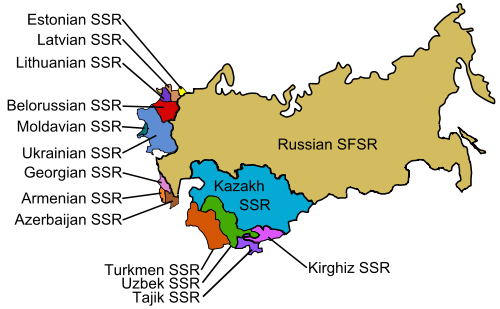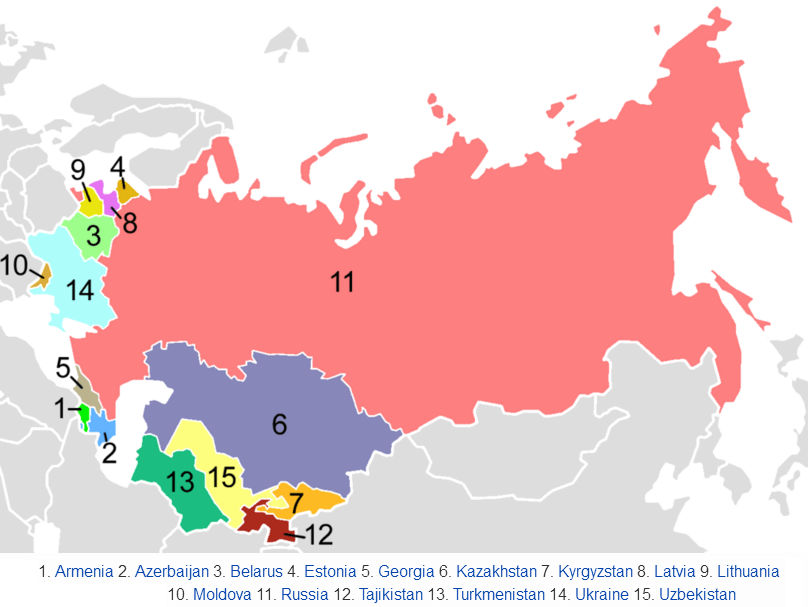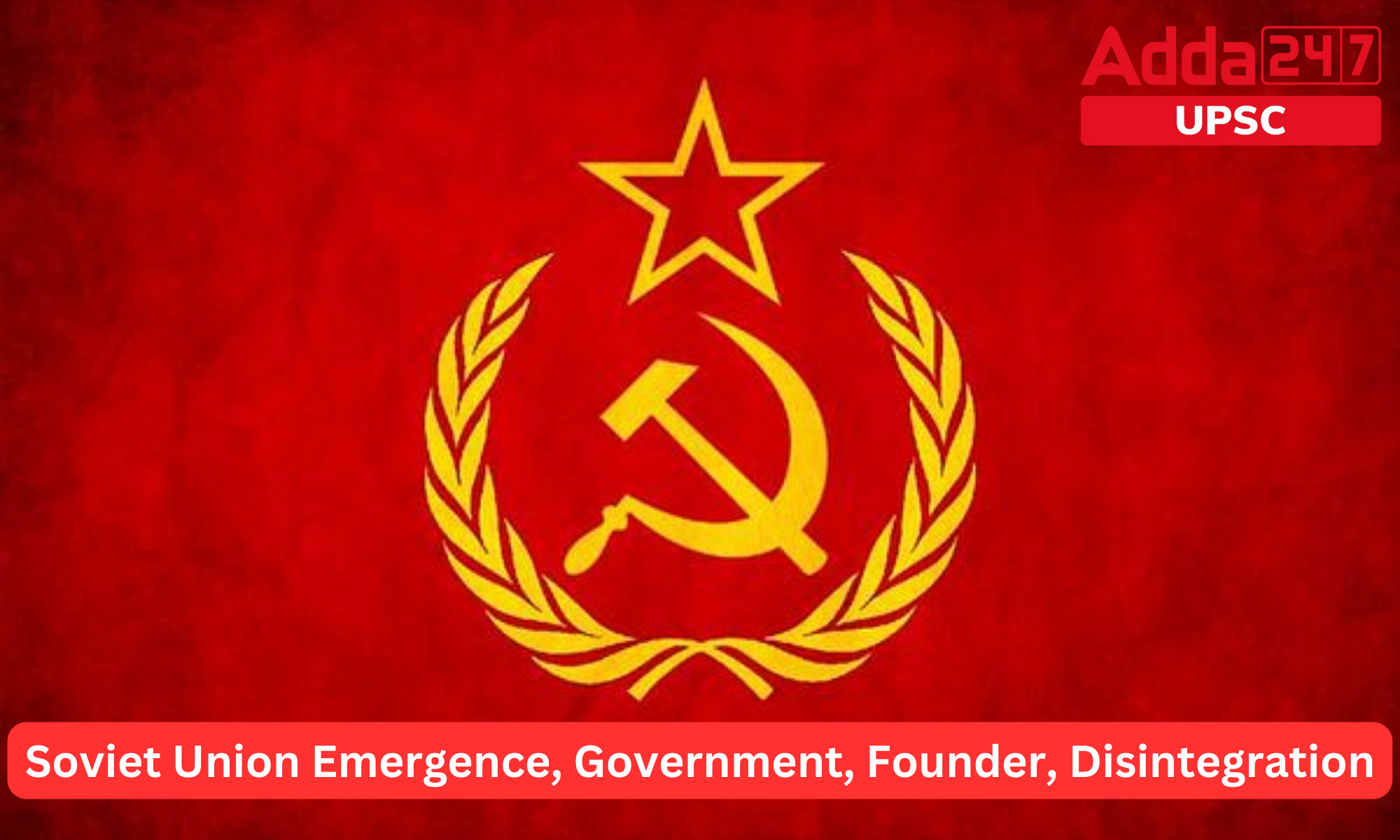Table of Contents
Soviet Union
The Soviet Union, officially known as the Union of Soviet Socialist Republics (USSR), was a socialist state that existed from 1922 until its dissolution in 1991. The Soviet Union was the largest country in the world, covering an area of over 22 million square kilometers, spanning across 11 time zones, and comprised of 15 republics.
Foundation of Soviet Union
The Soviet Union was founded after the Russian Revolution of 1917, which overthrew the Tsarist autocracy and established a socialist government led by Vladimir Lenin. The new government nationalized industry, redistributed land, and introduced a planned economy. The Soviet Union became a global superpower and played a key role in shaping world events during the 20th century.
Challenges faced by Soviet Union
The Soviet Union faced many challenges during its history, including famine, war, and political repression. In the 1930s, Soviet leader Joseph Stalin initiated a program of forced collectivization of agriculture and rapid industrialization known as the Five-Year Plans. These policies led to widespread famine and the deaths of millions of people.
Soviet Union: Role in World War II
During World War II, the Soviet Union played a critical role in defeating Nazi Germany on the Eastern Front, suffering an estimated 27 million casualties in the process. The Soviet Union emerged from the war as a dominant military and political power, with a sphere of influence that included much of Eastern Europe.
However, the Soviet Union’s global influence began to wane in the post-war period, as the United States emerged as a rival superpower. The Soviet Union engaged in a decades-long ideological and military struggle with the United States known as the Cold War. During this period, the Soviet Union supported communist governments and insurgencies around the world, while the United States supported anti-communist forces.
Soviet Union: Change in Politics in 1980s
The Soviet Union underwent significant political changes in the 1980s under the leadership of Mikhail Gorbachev. Gorbachev introduced reforms aimed at improving the economy and increasing political openness, known as perestroika and glasnost. However, these reforms also led to demands for greater political autonomy and independence among the republics of the Soviet Union.
In 1991, a failed coup attempt against Gorbachev by hardline Communist Party officials accelerated the collapse of the Soviet Union. The republics of the Soviet Union declared independence, and the Soviet Union was officially dissolved on December 26, 1991.
The legacy of the Soviet Union is complex and contested. Supporters of the Soviet Union point to its achievements in industrialization, space exploration, and social welfare programs. Critics of the Soviet Union point to its human rights abuses, political repression, and economic inefficiencies.
Emergence of Soviet Union
The Soviet Union, officially known as the Union of Soviet Socialist Republics (USSR), was a federal socialist state that existed from 1922 to 1991. It emerged after the Russian Revolution of 1917 and was the world’s first socialist state.
- The Russian Revolution of 1917 was a series of events that led to the overthrow of the Tsarist autocracy and the establishment of the Soviet government.
- The Bolsheviks, led by Vladimir Lenin, were the driving force behind the revolution.
- They believed in a Marxist-Leninist ideology, which advocated for the overthrow of capitalism and the establishment of a socialist state.
- In 1918, the Bolsheviks signed the Treaty of Brest-Litovsk with Germany, ending Russia’s involvement in World War I.
- This allowed them to consolidate power and focus on building a new socialist state. However, the Bolsheviks faced significant challenges, including a civil war that lasted from 1918 to 1922.
- The war was fought between the Bolsheviks, who were supported by the Red Army, and various anti-Bolshevik forces, known as the White Army.
- Despite the challenges, the Bolsheviks emerged victorious in the civil war and established the Soviet Union on December 30, 1922.
- The new state was made up of 15 republics, including Russia, Ukraine, Belarus, Georgia, and Armenia, among others.
- Under Soviet rule, the economy was nationalized, and private property was abolished. The government controlled all aspects of the economy, including production, distribution, and pricing.
- The Soviet Union also implemented policies aimed at improving the standard of living for its citizens, such as free education, healthcare, and housing.
- However, the Soviet Union was not without its problems. The government’s authoritarian rule led to widespread censorship and repression.
- Dissent was not tolerated, and those who spoke out against the government were often punished severely.
- The Soviet Union also faced economic challenges, with the economy struggling to keep up with the demands of a rapidly growing population.
- Despite these challenges, the Soviet Union played a significant role in world history.
- It was a major world power during the Cold War and played a key role in the victory over Nazi Germany during World War II.
- The Soviet Union was also a leader in space exploration, with the launch of the first satellite, Sputnik, in 1957.
The Soviet Union came to an end in 1991, following the collapse of the communist government. The collapse was due to a combination of factors, including economic stagnation, political corruption, and growing dissent among the population. The collapse of the Soviet Union marked the end of the Cold War and the beginning of a new era in world history.

Soviet Union Founder: Vladimir Lenin
The Soviet Union was founded in 1922. It was created as a result of the Bolshevik Revolution of 1917, which overthrew the Russian Provisional Government and established the Russian Soviet Federative Socialist Republic (RSFSR). The RSFSR was later joined by other Soviet republics, including Ukraine, Belarus, Georgia, Armenia, Azerbaijan, Uzbekistan, Turkmenistan, Tajikistan, Kazakhstan, and Kyrgyzstan, to form the Union of Soviet Socialist Republics (USSR) in 1922. The key figure in the founding of the Soviet Union was Vladimir Lenin, the leader of the Bolshevik Party and the first head of the Soviet government.

Soviet Union Government
The Soviet Union was a socialist state that existed from 1922 to 1991. It was governed by the Communist Party of the Soviet Union (CPSU), which controlled all aspects of government and society. The Soviet Union was the first country to establish a socialist government and was a major global power during its existence.
- The Soviet Union’s government was based on a system of state socialism, in which the means of production were owned and controlled by the state.
- This meant that the government had complete control over the economy and could direct resources towards specific goals.
- The Soviet government also controlled the media, education, and other cultural institutions, which helped to shape the beliefs and values of its citizens.
- The highest governing body in the Soviet Union was the Politburo, which was made up of the most senior members of the Communist Party.
- The Politburo was responsible for making all major decisions, including economic policy, foreign policy, and military strategy.
- The general secretary of the Communist Party was the most powerful member of the Politburo and was responsible for setting the agenda and directing the work of the government.
- The Soviet Union was divided into a number of administrative units, including republics, oblasts, and autonomous regions.
- Each administrative unit had its own government, which was responsible for implementing policies and laws set by the central government in Moscow.
- The Soviet government also had a powerful secret police force, known as the KGB, which was responsible for maintaining internal security and suppressing dissent.
- Despite its many achievements, the Soviet Union was often criticized for its lack of political freedoms and human rights abuses.
- The Soviet government was known for its strict censorship of the media and its suppression of political opposition. Dissenters were often sent to labor camps or mental institutions, where they were subjected to brutal conditions and forced labor.
In the 1980s, a series of reforms known as perestroika were introduced by Soviet leader Mikhail Gorbachev. These reforms aimed to modernize and liberalize the Soviet economy and political system. However, they ultimately proved to be too little, too late, and the Soviet Union collapsed in 1991.

Soviet Union Disintegration
The disintegration of the Soviet Union was a pivotal moment in world history, marking the end of the Cold War and the collapse of one of the world’s most powerful nations. The disintegration began in the late 1980s and culminated with the formal dissolution of the Soviet Union on December 26, 1991. The collapse of the Soviet Union had a profound impact on global politics, economics, and social structures, and its effects are still felt today.
- The Soviet Union was formed in 1922 as a union of several republics under the leadership of the Communist Party of the Soviet Union.
- The Soviet Union was the world’s largest country, covering one-sixth of the world’s land area and consisting of 15 republics.
- The Soviet Union was a socialist state with a planned economy, and it was governed by a one-party system led by the Communist Party.
- In the early 1980s, the Soviet Union was facing significant economic challenges, including a shortage of food, declining industrial output, and a growing budget deficit.
- The Soviet Union also faced political challenges, including a growing sense of discontent among the population, particularly in the republics outside Russia, who were demanding greater autonomy.
- In 1985, Mikhail Gorbachev became the General Secretary of the Communist Party of the Soviet Union. Gorbachev introduced a series of reforms designed to modernize the Soviet economy and political system.
- The reforms included perestroika, which aimed to restructure the Soviet economy by allowing more market forces and decentralization, and glasnost, which aimed to increase transparency and freedom of speech.
- The reforms led to a loosening of state control over the economy and greater political freedoms, which led to the emergence of opposition movements and the erosion of the Communist Party’s authority.
- The reforms also led to an increase in nationalism in the republics, particularly in the Baltic states, Ukraine, and Georgia, which were seeking greater autonomy.
- In 1989, the Soviet Union withdrew its troops from Afghanistan, which had been a significant drain on resources and morale.
- The withdrawal was seen as a victory for the United States and a sign of the Soviet Union’s declining power.
- In August 1991, a group of hardline Communist Party members attempted to overthrow Gorbachev and take control of the Soviet Union.
- The coup failed, and Gorbachev returned to power. However, the coup highlighted the growing divisions within the Communist Party and the weakness of the Soviet state.
In September 1991, representatives of the republics met in Minsk, Belarus, to discuss the future of the Soviet Union. The republics, with the exception of Georgia, agreed to form a new confederation called the Commonwealth of Independent States (CIS), which would replace the Soviet Union. The Soviet Union was formally dissolved on December 26, 1991, and the CIS became the successor state to the Soviet Union.

Impact of Soviet Union Collapse
The collapse of the Soviet Union had a significant impact on global politics, economics, and social structures. The end of the Cold War led to a shift in the balance of power in international relations, with the United States emerging as the world’s sole superpower. The collapse of the Soviet Union also led to the emergence of new states in Central Asia and the Caucasus, which have become important players in global politics.
The collapse of the Soviet Union had a profound impact on the lives of the people who lived in the former Soviet republics. The transition from a planned economy to a market economy was accompanied by a period of economic turmoil and social dislocation, which led to high levels of poverty and inequality. The collapse of the Soviet Union also led to a resurgence of nationalism and ethnic tensions in some regions, particularly in the Caucasus and Central Asia.
Soviet Union vs Russia
The Soviet Union and Russia are two terms that are often used interchangeably, but they actually refer to two different entities. The Soviet Union, officially known as the Union of Soviet Socialist Republics (USSR), was a federal socialist state that existed from 1922 to 1991. Russia, on the other hand, is a country that emerged from the disintegration of the Soviet Union in 1991. In this article, we will explore the differences between the Soviet Union and Russia, including their political systems, economies, and international relations.
Soviet Union vs Russia: Political Systems
The Soviet Union was a one-party state ruled by the Communist Party of the Soviet Union (CPSU). The CPSU was a Marxist-Leninist party that believed in the dictatorship of the proletariat, the centralization of power, and the nationalization of industry and agriculture. The Soviet government was divided into three branches: the legislative, the executive, and the judicial. However, in practice, the real power was concentrated in the hands of the Communist Party and its leader, the General Secretary.
Russia, on the other hand, is a federal semi-presidential republic. The President of Russia is the head of state, while the Prime Minister is the head of government. The President is elected for a six-year term, while the Prime Minister is appointed by the President with the approval of the State Duma, the lower house of the Russian parliament. The Russian political system is characterized by a strong presidency, a weak parliament, and a limited separation of powers.
Soviet Union vs Russia: Economies
The Soviet Union had a planned economy, where the state controlled all aspects of production and distribution. The government set production targets, allocated resources, and fixed prices. Private enterprise was banned, and all industries were owned by the state. The Soviet economy was heavily focused on heavy industry, such as steel production, mining, and machinery.
Russia, on the other hand, has a mixed economy, where the state and the private sector coexist. After the collapse of the Soviet Union, Russia transitioned to a market economy, which led to the privatization of many state-owned enterprises. However, the Russian government still controls some strategic industries, such as energy, defense, and transportation.
Soviet Union vs Russia: International Relations
During the Cold War, the Soviet Union was a superpower and a rival of the United States. The Soviet Union was a founding member of the Warsaw Pact, a military alliance of communist countries in Eastern Europe, and engaged in a global competition with the United States for influence and control. The Soviet Union also supported communist movements and insurgencies in various countries, including Cuba, Vietnam, and Angola.
After the collapse of the Soviet Union, Russia emerged as a regional power with global ambitions. Russia has sought to reassert its influence in its former Soviet republics, such as Ukraine, Georgia, and Belarus. Russia has also been involved in conflicts in Syria and Libya, and has engaged in cyberattacks and disinformation campaigns against the United States and other Western countries.
Soviet Union vs Russia: Overall
In conclusion, the Soviet Union and Russia are two different entities with distinct political systems, economies, and international relations. The Soviet Union was a one-party socialist state that controlled all aspects of production and distribution, while Russia is a federal semi-presidential republic with a mixed economy. The Soviet Union was a superpower that rivalled the United States, while Russia is a regional power with global ambitions. Despite the differences between the two entities, there are also some continuities, such as the use of propaganda and the emphasis on state power and sovereignty.
| Also Read: | |



 TSPSC Group 1 Question Paper 2024, Downl...
TSPSC Group 1 Question Paper 2024, Downl...
 TSPSC Group 1 Answer key 2024 Out, Downl...
TSPSC Group 1 Answer key 2024 Out, Downl...
 UPSC Prelims 2024 Question Paper, Downlo...
UPSC Prelims 2024 Question Paper, Downlo...





